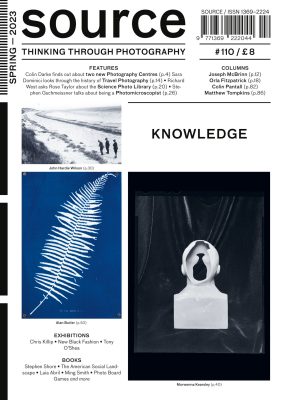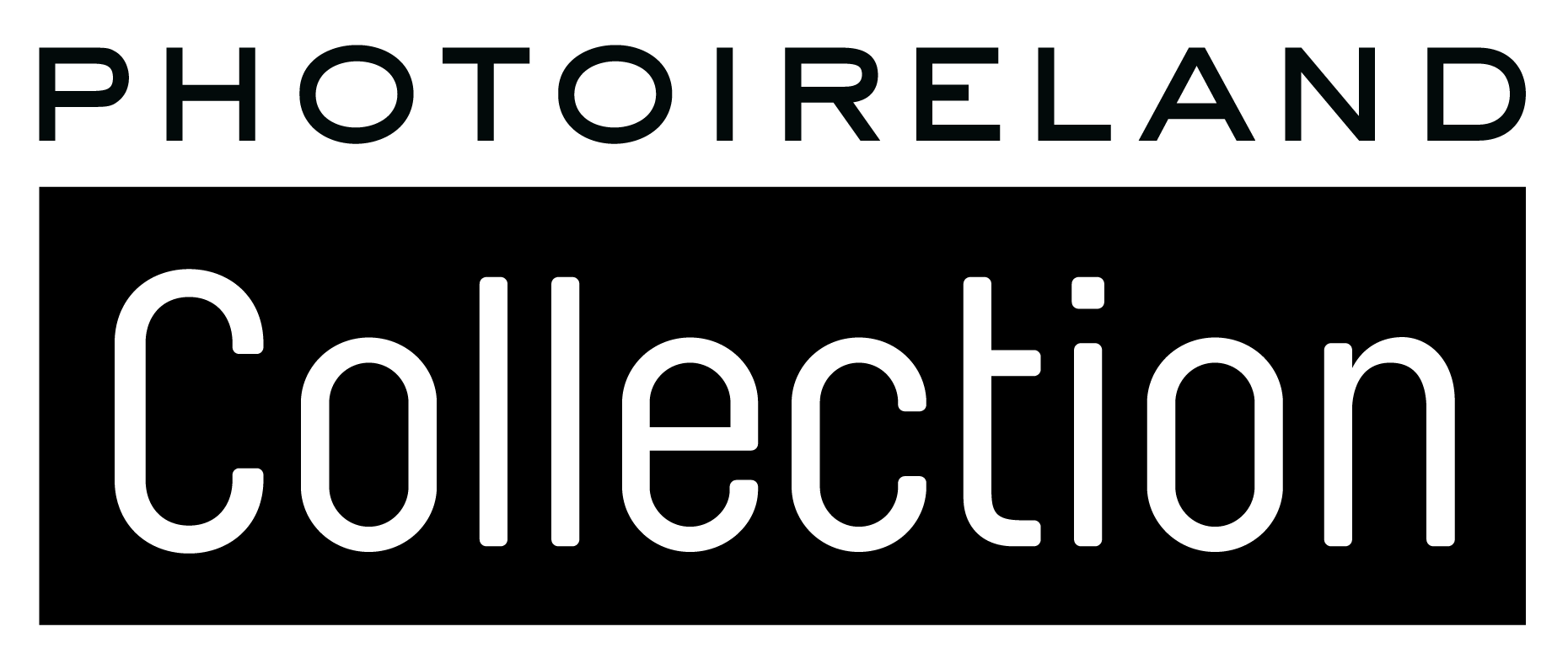
 Source
Source
Spring 2023: Issue 110
Self-Published
English
Edited by John Duncan and Richard West.
Softcover
86 Pages
310 x 220 mm
2023
ISSN 13692224
Issue 110 of Source magazine, published in Spring 2023 features articles on themes of science and botany. Articles featured discuss microscopic and telescopic cameras in science today, the botanic photographs of John Hardie Wilson (UK, M) and Alan Butler‘s (IE, M) Virtual Botany Cyanotypes. This issue also contains a feature on the digitisation of the Daily Herald Archive, an analysis by Orla Fitzpatrick (IE, F) of a recent auction of Eugène Atget‘s (FR, M) photographs and exhibition reviews of Chris Killip (UK, F) and Tony O’Shea (IE, M). This issue has a strong concentration of reviews, particularly of book reviews both self-published and commercially, such as Laia Abril‘s (ES, F) A History of Misogyny Chapter Two: On Rape and Institutional Failure. There are also reviews of games featured.
Artists and writers featured in this issue include Erik Madigan Heck (US, M), Joseph McBrinn (IE, M), Sara Dominici (UK, F), Orla Fitzpatrick (IE, F), Richard West (NI, M), Rose Taylor (US, F), Chloé Morrison, Stephen Gschmeissner (UK, M), Alan Butler (IE, M), Eugenie Skinkle (UK, F), Nora Labo (FR, F), Morwenna Kearsley (UK, F), Francesca Butterfield (US, F), Chris Killip (UK, M), Jennifer Good (UK, F), Eugène Atget (FR, M), Francis Summers (UK, M), Tony O’Shea (IE, M), Colin Graham (IE, M), Stephen Shore (US, M), Lucy Soutter (UK, F), Stacy Kranitz (US, F), Curran Hatleberg (US, M), Alex Soth (US, M), John Beck (UK, M), Laia Abril (ES, F), Roberta McGrath (UK, F), Oluremi C. Onabanjo (NG, F), Chris Milton (UK, M), Byron Jorjorian (US, M), Anthony Nouveau (FR, M), Christian Stöhr (DE, M), Daniela Stöhr (DE, F), AJ Porfirio (US, M), Sabine Kriebel (US, F), Ian Walker (UK, M), Jaap Scheeren (NL, M), Simon Denison (UK, M), Phil Sharp (UK, M), Lorcan Finnegan (IE, M), Andrew Nuding (IE, M), Olgaç Bozlap (TR, M), Phil Hill (UK, M) and Colin Pantall (UK, M).
Editorial
We know about many places we have never visited via photographs. Many of those photographs could be described as tourist or travel photography, a category that extends from traveller’s pictures to those commissioned by tourist boards and travel companies. Sara Dominici outlines the development of this genre, from surprisingly early on in the history of photography to the present day, and shows that these images are as much a product of market forces as anyone’s desire to learn about the world.
We might have more confidence in science as a foundation for our knowledge. If you are not a scientist then you could come to understand scientific insights via images, in particular those generated by recent technologies like MRI scanners, Electron Microscopes and the latest telescopes, all of which show us things that would otherwise be invisible to us. The Science Photo Library was set up to distribute these images to a market beyond the narrow scientific literature that they were originally created for. Rose Taylor, the Creative Director, explains how these images circulate and what transformation they undego to reach a general public.
John Hardie Wilson practised botany and agronomy in the late nineteenth and early twentieth century, lecturing in both disciplines at St Andrews University. His lectures were illustrated by his specimen photographs, of which there are hundreds archived by the university. Through his various uses of the medium he aimed to expose details which would otherwise not be discernible. Nora Labo looks at these lantern slides of plant life, from microscopic detail to their place within the landscape. She describes the images as ‘simultaneously informative and marvellous’.
John Hardie Wilson practised botany and agronomy in the late nineteenth and early twentieth century, lecturing in both disciplines at St Andrews University. His lectures were illustrated by his specimen photographs, of which there are hundreds archived by the university. Through his various uses of the medium he aimed to expose details which would otherwise not be discernible. Nora Labo looks at these lantern slides of plant life, from microscopic detail to their place within the landscape. She describes the images as “simultaneously informative and marvellous”.
Alan Butler’s Virtual Botany Cyanotypes have the appearance of scientific images, specifically they resemble Anna Atkins’ Photographs of British Algae. However, although they have been systematically collected and carefully presented, Butler is a virtual Botanist harvesting digital plants. As Eugenie Shinkle describes, the distinction between the virtual catalogue and the real is not so straightforward. The digital plants have undergone an evolution, just like their real world counterparts. Can these plants and the computer generated ecosystems they come from be an object of knowledge too?
Morwenna Kearsley has also produced a catalogue of precisely-photographed objects. The title, Notch Coderefers to the film with which these record pictures were made. The objects resemble the contents of a museum display cabinet but they are each titled as if from a folk tale. As Francesca Butterfield explains, you can know someone via the prosaic, every day items they collect. Presented in the right way those objects might become a fable about their life.
— The Editors
(source: https://www.source.ie/archive/issue109/is109editorial.php)
About the Magazine
Source is a quarterly photography magazine, available in print and as a digital edition, published in Belfast, Northern Ireland. They publish emerging photographic work and engage with the latest in contemporary photography through news, thoughtful features and reviews of the latest exhibitions and books from Ireland and the UK. Their website brings together an archive of writing and pictures from the magazine alongside current features.
source.ie
(source: https://www.source.ie/main/about.php)



